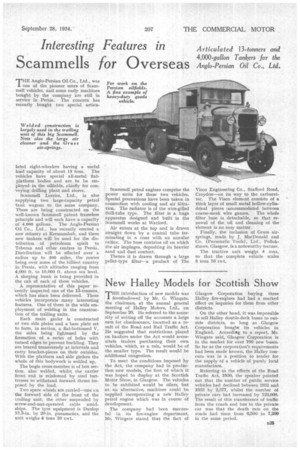New Halley Models for Scottish Show
Page 35

If you've noticed an error in this article please click here to report it so we can fix it.
THE introduction of new models was foreshadowed by Mr. G. Wingate, the chairman, at the annual general meeting of Halley Motors, Ltd., on September 20. Ile referred to the necessity of writing off the accounts a large sum for obsolescence, incurred as a result of the Road and Rail Traffic Act. He suggested that restrictions placed on hauliers under the Act would necessitate traders purchasing their own vehicles, which, as a rule, would be of the smaller type. The result would be additional congestion.
To meet the conditions imposed by the Act, the company had in production new, models, the first of which it was hoped to display at the Scottish Motor Show, in Glasgow. The vehicles to he exhibited would be oilers, but as an alternative, machines could he supplied incorporating a ne"iv Halley petrol engine which was in course of development.
The company had been successful in its fire-engine department. Mr. Wingate stated that the fact of Glasgow Corporation buying three Halley fire-engines had had a marked effect on inquiries for them from other districts.
On the other hand, it was impossible to sell Halley double-deck buses to outside districts, so long as Glasgow Corporation bought its vehicles in England. According to a report, Mr. Wingate said, Glasgow Corporation is in the market for over 100 new buses. So far as the corporation's requirements had been made known, the Halley concern was in a position to tender for. the supply of a vehicle of purely local manufacture.
Referring to the effects of the Road Traffic Act, 1930, the speaker pointed out that the number of public service vehicles had declined between 1931 and 1933 by 2,377, whilst the number of private cars had increased by 123,000. The result of this transference of traffic from the coach and bus to the private car was that the death rate on the roads had risen from. 6,500 to 7,200 in the same period.
• B25




















































































